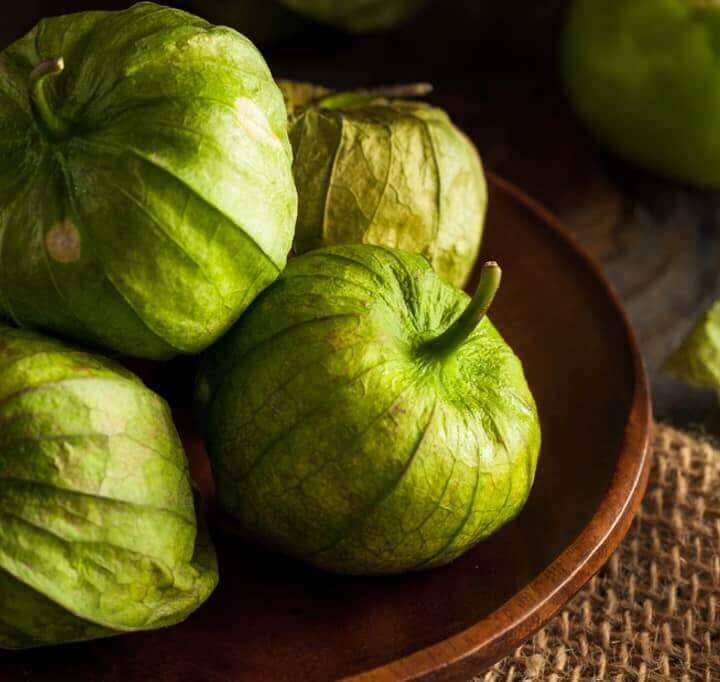If you havent yet been introduced to this fun-to-say fruit, heres everything you need to know about the tomatillo (aka Physalis philadelphica or Physalis ixocarpa). Lets start with the basics, which includes a common misconception. As Bon Appétit notes, no, its not a baby tomato, although thats kind of what the name means in Spanish (tomatillo literally translates as “little tomato”). Also, its commonly referred to as tomate verde in México, which means green tomato.
Youll sometimes hear it referred to as a husk tomato, or even a husk cherry, because of the thin, papery husk which protects the tomatillo as it grows, and must be peeled and washed before preparation (although this is sometimes done before theyre displayed in supermarkets). Some even refer to it as a Mexican ground cherry, presumably due to its size and ability to self-sow (per MasterClass, ripe tomatillos that arent harvested will drop to the ground and seed themselves).
Unripe tomatillos contain some solanine, which gives them a bitter taste. But most people can eat a moderate amount of unripe tomatillos without getting sick, so I would not call them “toxic”.

The history of the tomatillo
Per Scientific American, the earliest known tomatillo plant fossil was found in Patagonia and dates to 52 million years ago, making it the oldest evidence for any member of the nightshade family, which includes not just tomatoes, but also potatoes, chiles, ground cherries, and tobacco. Despite this far-flung fossil, the tomatillos ancestral home, in terms of historical cultivation, is México, where it has been grown since at least 800 BCE, according to Many Eats. The word tomatillo, in fact, originated from the Nahuatl word tomatl, and tomatillos were important culinary ingredients for both the Aztecs and the Mayans.
It is thought that the appearance of the tomatillo in Southern Europe dates to the Spanish conquest of Mexico in the early 16th century (via Many Eats). In modern times, tomatillos grow in warm weather locales around the globe, including Australia, South Africa, and India, where they lend their distinctive flavor to curries and chutneys. They are also grown, of course, in the U.S.
How do tomatillos differ from related fruits like tomatoes?
Given how many other fruits tomatillos are compared to in terms of name, its only fair to wonder how they compare in size, texture, and color. Per Small Kitchen Guide, tomatillos are both smaller and softer than green tomatoes. Theyre also smaller than most other varieties of tomatoes. According to MasterClass, tomatillos at their largest are about the size of a golf ball, while larger forms of tomatoes can grow as big as a softball. The one exception is cherry tomatoes. A mature tomatillo is about the same size, or slightly larger than a cherry tomato, per Harvest to Table.
Tomatoes also differ in texture from tomatillos, as MasterClass notes. Ripe tomatoes are tender, juicy, and easily bruised, whereas ripe tomatillos remain very firm and dense. What about the ground cherry, aka the cape gooseberry? Tomatillos are larger than ground cherries, but the two share the presence of a papery husk. Ground cherries are typically an orangish-yellow color, however, while tomatillos are most often green.
Why tomatillos aren’t just little green tomatoes (and why they’re awesome)
FAQ
Are tomatillos poisonous raw?
Is it OK to eat raw tomatillos?
What happens if you don’t wash tomatillos?
Can you eat tomatillos by themselves?
Are tomatillos poisonous?
The fruit of tomatillos isn’t poisonous (otherwise, we wouldn’t eat them raw or use the ingredient when cooking). However, an unripe tomatillo is a different and more dangerous story. Whether it’s ripe or not, every tomatillo contains a toxin known as solanine, which is present in many nightshade fruits like tomatoes and peppers.
Can one eat too many tomatoes?
Eating too many tomatoes can cause skin discoloration, digestive troubles, body aches, and acid reflux. There is not a recommended number of tomatoes to eat per day, but it is important to include a variety of fruits and vegetables in your diet instead of relying on just one option like tomatoes.
Are tomatillos a nutrient?
National Institutes of Health Office of Dietary Supplements: “Vitamin A and Carotenoids.” Also known as the Mexican husk tomato, tomatillos are part of the nightshade family and are used in many Mexican dishes to make salsas and green sauces.
Can you eat a lot of tomatillos?
Due to their high water content, you can eat a lot of tomatillos without taking in many calories. Also, unlike many other condiments, fresh sauces and salsas made with tomatillos contain very little sugar and are a healthy and tasty way to fill your stomach.
